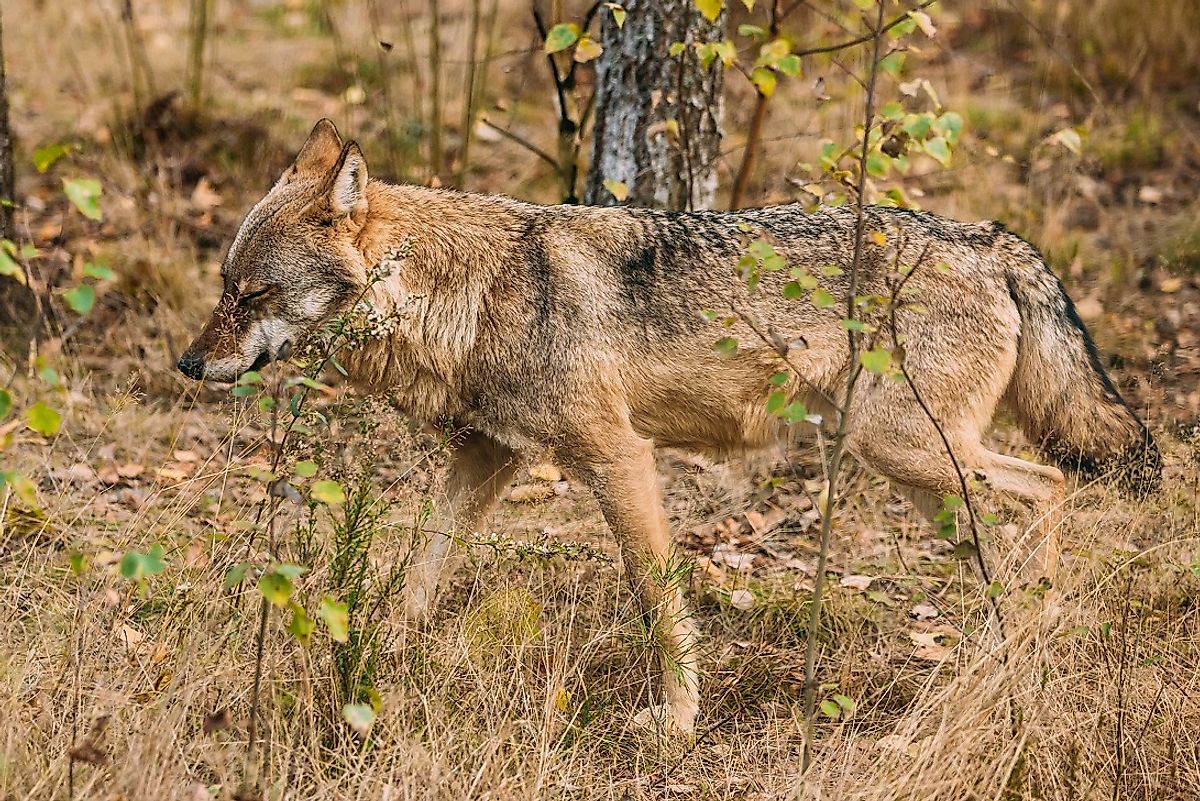Eurasian Wolf Facts: Animals of Europe

5. Physical Description
Of the three major species of wolf that are spread across the globe, one of the most famous is the Eurasian, or “Common”, wolf. This large canine is most commonly found in central Russia and Eastern and Northern Europe. Reaching up to 35 inches in height and weighing between 70 and 130 pounds, the Eurasian wolf is the largest of its kind in Eurasia. The largest recorded Grey Wolf was killed in Romania, and was said to have weighed 158 pounds. Although sometimes referred to as the “Grey Wolf”, these Wolves aren’t always grey in color. In fact, it is common to see cream colored Eurasian wolfs, as well as ones with brown or black pelts. These wolves are more rich in color when found in Northern Europe than elsewhere.
4. Diet
Much like North American wolves, the Eurasian wolf eats mammals of a range of different sizes, including various domesticated breeds of livestock. These mammals range from saiga, wild boar, and red deer, to roe deer and moufflon. Due to human advancements and construction, a lot of the Eurasian Wolf’s natural food sources have become increasingly scarce, which is why they often seek out and attack farmers' livestock in compensation. These wolves hunt in packs in order to take down larger animals such as yaks and wisents. During this type of hunting, the wolves will victimize the young or weak in order to separate them from the crowd, and chase the animal to the point of exhaustion, so that they will more easily be able to eventually kill it.
3. Habitat and Range
These wolves are found throughout Eastern Europe and Western Russia and, at one time many years ago, they were considered one of the world’s most widely distributed land mammals. During this time, the grey wolf was found throughout much of Eurasia. Today, however, they are mostly found in select parts of Eurasia. They live in the tundra, taiga, dessert, plains or mountains, and their coats are perfect for the cold temperatures common in northern climes.
2. Behavior
Wolves in general are highly social animals, and the Eurasian wolf is no exception to his rule. After a decline in territory for the wolves, they began resurfacing in much larger numbers in groups known as “packs”. Whether they hunt in packs or not, however, is dependant on the amount of food and the type of food available to them at a given time and place. If many larger animals around the area occur, they will hunt in packs, while otherwise the wolves will forage on their own, or together in smaller numbers.
1. Reproduction
Like many members of the Animal Kingdom, Eurasian wolves breed during the early winter months and into the spring. After between 61 and 65 days of pregnancy, a female Eurasian wolf will give birth to around 4 to 7 pups. The whole pack will raise and disciple these young wolves, though it is only the most dominate females and males that will mate. This ensures that only the strongest genes will survive, and that the strength of the pack will be maintained for generations to come.







